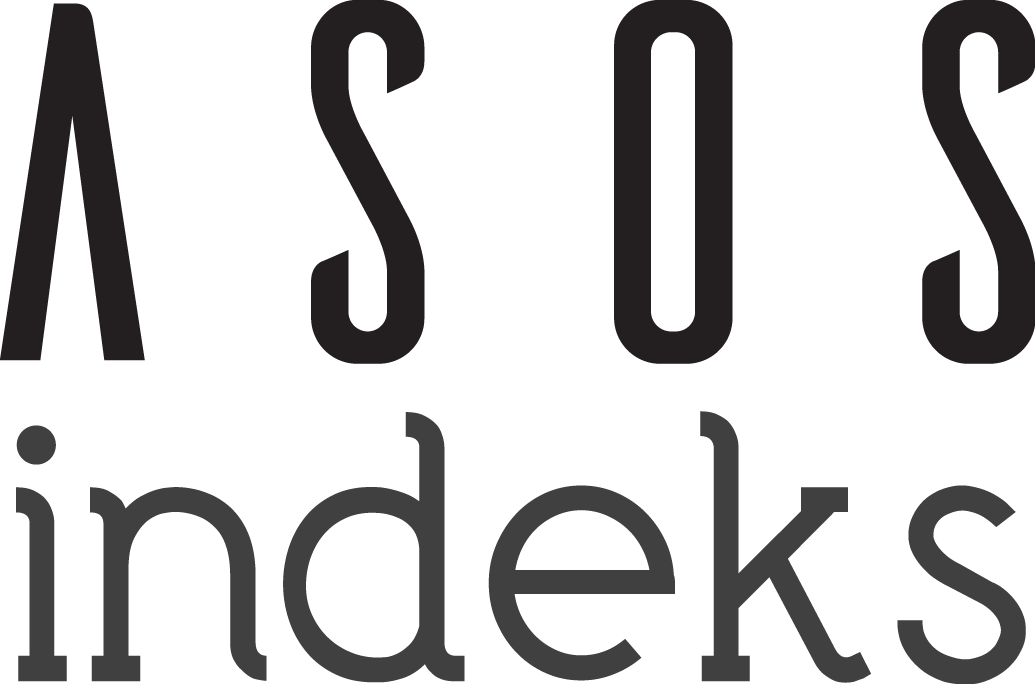Abstract
Aims: Functional pituitary adenomas such as acromegaly or Cushing adenoma can cause endocrinopathies and affect tissues. These functional pituitary adenomas can cause anatomical variations by tissue hypertrophy. The aim of this study is to reveal differences of anatomical structures on the surgical route between normal patients and acromegalic pituitary microadenoma patients via magnetic resonance imaging scanning of pituitary gland.
Methods: We investigated magnetic resonance scannings of 20 acromegalic pituitary adenoma patients preoperatively and 20 control patients. Carotid canal width, pyriform apical width, concha widths, frontal skin thicknesses, lip thickness and nasal heights were compared.
Results: Pyriform aperture widths were 22.76±0.94 mm in acromegalic patients and 21.80±0.53 mm in normal patients, concha widths were 9.38±1.22 mm in acromegalic patients and 7.98±0.78 mm in normal patients, frontal skin thicknesses were 6.77±0.38 mm in acromegalic patients and 4.94±1.03 mm in normal patients, lip thicknesses were found as 5.10±0.55 mm in acromegalic patient and 4.18±0.77 mm in normal patients, nasal heights were found as 49.8±0.89 mm in acromegalic patients and 48.88±3.97 mm in normal patients and these differences were statistically significant (p<0.05).
Conclusion: Since there are anatomical differences in acromegalic pituitary adenoma patients, variations of these anatomical structures should be defined and approaches should be adapted in transsphenoidal surgeries.
Ethical Statement
The study was conducted in accordance with the Declaration of Helsinki, and approved by the İzmir Katip Çelebi University Clinical Research Ethics Committee (protocol code 315 and date of approval 20/12/2017)
Supporting Institution
None.
References
- Netuka D, Majovsky M, Masopust V, et al. Intraoperative magnetic resonance imaging during endoscopic transsphenoidal surgery of growth hormone-secreting pituitary adenomas. World Neurosurg. 2016; 91:490-496. doi:10.1016/j.wneu.2016.04.094
- Colao A, Ferone D, Marzullo P, Lombardi G. Systemic complications of acromegaly: epidemiology, pathogenesis, and management. Endocr Rev. 2004;25(1):102-152. doi:10.1210/er.2002-0022
- Potorac I, Petrossians P, Daly AF, et al. Pituitary MRI characteristics in 297 acromegaly patients based on T2-weighted sequences. Endocr Relat Cancer. 2015;22(2):169-177. doi:10.1530/ERC-14-0305
- Carrabba G, Locatelli M, Mattei L, et al. Transphenoidal surgery in acromegalic patients: anatomical considerations and potential pitfalls. Acta Neurochir (Wien). 2013;155(1):125-130. doi:10.1007/s00701-012-1527-6
- Ebner FH, Kuerschner V, Dietz K, Bueltmann E, Naegele T, Honegger J. Reduced intercarotid artery distance in acromegaly: pathophysiologic considerations and implications for transsphenoidal surgery. Surg Neurol. 2009;72(5):456-460. doi:10.1016/j.surneu.2009.07.006
- Saeki N, Yamaura A, Iuchi T, Sunami K. Bone window CT evaluation on nasal cavity for transsphenoidal reoperations: a sequel to a previous publication. Br J Neurosurg. 2000;14(4):379-381.
- Zada G, Cavallo LM, Esposito F, et al. Transsphenoidal surgery in patients with acromegaly: operative strategies for overcoming technically challenging anatomical variations. Neurosurg Focus. 2010; 29(4):E8. doi:10.3171/2010.8.FOCUS10156
- Laws ER Jr. Vascular complications of transsphenoidal surgery. Pituitary. 1999;2(2):163-170. doi:10.1023/a:1009951917649
- Fukushima T, Maroon JC. Repair of carotid artery perforations during transsphenoidal surgery. Surg Neurol. 1998;50(2):174-177. doi:10.1016/s0090-3019(96)00416-8
- Takahara K, Tamura R, Isomura E, Kitamura Y, Ueda R, Toda M. Variable anatomical features of acromegaly in the nasal cavity and paranasal sinuses: implications for endoscopic endonasal transsphenoidal surgery. Acta Neurochir (Wien). 2024;166(1):408. doi:10.1007/s00701-024-06307-4
- Perondi GE, Isolan GR, de Aguiar PH, Stefani MA, Falcetta EF. Endoscopic anatomy of sellar region. Pituitary. 2013;16(2):251-259. doi: 10.1007/s11102-012-0413-9
- Mascarella MA, Forghani R, Di Maio S, et al. Indicators of a reduced intercarotid artery distance in patients undergoing endoscopic transsphenoidal surgery. J Neurol Surg B Skull Base. 2015;76(3):195-201. doi:10.1055/s-0034-1396601
- Kuan EC, Yoo F, Kim W, et al. Anatomic variations in pituitary endocrinopathies: implications for the surgical corridor. J Neurol Surg B Skull Base. 2017;78(2):105-111. doi:10.1055/s-0036-1585588
- Gardner PA, Tormenti MJ, Pant H, Fernandez-Miranda JC, Snyderman CH, Horowitz MB. Carotid artery injury during endoscopic endonasal skull base surgery: incidence and outcomes. Neurosurgery. 2013;73(2 Suppl Operative):ons261-9;discussion ons269-70. doi:10.1227/01.neu. 0000430821.71267.f2
- Abuzayed B, Tanriöver N, Ozlen F, et al. Endoscopic endonasal transsphenoidal approach to the sellar region: results of endoscopic dissection on 30 cadavers. Turk Neurosurg. 2009;19(3):237-244.
- Hamid O, El Fiky L, Hassan O, Kotb A, El Fiky S. Anatomic variations of the sphenoid sinus and their impact on trans-sphenoid pituitary surgery. Skull Base. 2008;18(1):9-15. doi:10.1055/s-2007-992764
- Tomovic S, Esmaeili A, Chan NJ, et al. High-resolution computed tomography analysis of variations of the sphenoid sinus. J Neurol Surg B Skull Base. 2013;74(2):82-90. doi:10.1055/s-0033-1333619
- Ebner FH, Kürschner V, Dietz K, Bültmann E, Nägele T, Honegger J. Craniometric changes in patients with acromegaly from a surgical perspective. Neurosurg Focus. 2010;29(4):E3. doi:10.3171/2010.7.FOCUS 10152
- Van Alyea OE. Sphenoid sinus: anatomic study, with consideration of the clinical significance of the structural characteristics of the sphe noid sinus. Arch Otolaryngol. 1941;34(2):225-253. doi:10.1001/archotol.1941. 00660040251002
- Kim HU, Kim SS, Kang SS, Chung IH, Lee JG, Yoon JH. Surgical anatomy of the natural ostium of the sphenoid sinus. Laryngoscope. 2001;111(9):1599-1602. doi:10.1097/00005537-200109000-00020
- Castle-Kirszbaum M, Uren B, Goldschlager T. Anatomic variation for the endoscopic endonasal transsphenoidal approach. World Neurosurg. 2021;156:111-119. doi:10.1016/j.wneu.2021.09.103
- Wolf P, Salenave S, Durand E, et al. Treatment of acromegaly has substantial effects on body composition: a long-term follow-up study. Eur J Endocrinol. 2021;186(2):173-181. doi:10.1530/EJE-21-0900
- Amaro AC, Duarte FH, Jallad RS, Bronstein MD, Redline S, Lorenzi-Filho G. The use of nasal dilator strips as a placebo for trials evaluating continuous positive airway pressure. Clinics (Sao Paulo). 2012;67(5):469-474. doi:10.6061/clinics/2012(05)11
Abstract
Aims: Functional pituitary adenomas such as acromegaly or Cushing adenoma can cause endocrinopathies and affect tissues. These functional pituitary adenomas can cause anatomical variations by tissue hypertrophy. The aim of this study is to reveal differences of anatomical structures on the surgical route between normal patients and acromegalic pituitary microadenoma patients via magnetic resonance imaging scanning of pituitary gland.
Methods: We investigated magnetic resonance scannings of 20 acromegalic pituitary adenoma patients preoperatively and 20 control patients. Carotid canal width, pyriform apical width, concha widths, frontal skin thicknesses, lip thickness and nasal heights were compared.
Results: Pyriform aperture widths were 22.76±0.94 mm in acromegalic patients and 21.80±0.53 mm in normal patients, concha widths were 9.38±1.22 mm in acromegalic patients and 7.98±0.78 mm in normal patients, frontal skin thicknesses were 6.77±0.38 mm in acromegalic patients and 4.94±1.03 mm in normal patients, lip thicknesses were found as 5.10±0.55 mm in acromegalic patient and 4.18±0.77 mm in normal patients, nasal heights were found as 49.8±0.89 mm in acromegalic patients and 48.88±3.97 mm in normal patients and these differences were statistically significant (p<0.05).
Conclusion: Since there are anatomical differences in acromegalic pituitary adenoma patients, variations of these anatomical structures should be defined and approaches should be adapted in transsphenoidal surgeries.
References
- Netuka D, Majovsky M, Masopust V, et al. Intraoperative magnetic resonance imaging during endoscopic transsphenoidal surgery of growth hormone-secreting pituitary adenomas. World Neurosurg. 2016; 91:490-496. doi:10.1016/j.wneu.2016.04.094
- Colao A, Ferone D, Marzullo P, Lombardi G. Systemic complications of acromegaly: epidemiology, pathogenesis, and management. Endocr Rev. 2004;25(1):102-152. doi:10.1210/er.2002-0022
- Potorac I, Petrossians P, Daly AF, et al. Pituitary MRI characteristics in 297 acromegaly patients based on T2-weighted sequences. Endocr Relat Cancer. 2015;22(2):169-177. doi:10.1530/ERC-14-0305
- Carrabba G, Locatelli M, Mattei L, et al. Transphenoidal surgery in acromegalic patients: anatomical considerations and potential pitfalls. Acta Neurochir (Wien). 2013;155(1):125-130. doi:10.1007/s00701-012-1527-6
- Ebner FH, Kuerschner V, Dietz K, Bueltmann E, Naegele T, Honegger J. Reduced intercarotid artery distance in acromegaly: pathophysiologic considerations and implications for transsphenoidal surgery. Surg Neurol. 2009;72(5):456-460. doi:10.1016/j.surneu.2009.07.006
- Saeki N, Yamaura A, Iuchi T, Sunami K. Bone window CT evaluation on nasal cavity for transsphenoidal reoperations: a sequel to a previous publication. Br J Neurosurg. 2000;14(4):379-381.
- Zada G, Cavallo LM, Esposito F, et al. Transsphenoidal surgery in patients with acromegaly: operative strategies for overcoming technically challenging anatomical variations. Neurosurg Focus. 2010; 29(4):E8. doi:10.3171/2010.8.FOCUS10156
- Laws ER Jr. Vascular complications of transsphenoidal surgery. Pituitary. 1999;2(2):163-170. doi:10.1023/a:1009951917649
- Fukushima T, Maroon JC. Repair of carotid artery perforations during transsphenoidal surgery. Surg Neurol. 1998;50(2):174-177. doi:10.1016/s0090-3019(96)00416-8
- Takahara K, Tamura R, Isomura E, Kitamura Y, Ueda R, Toda M. Variable anatomical features of acromegaly in the nasal cavity and paranasal sinuses: implications for endoscopic endonasal transsphenoidal surgery. Acta Neurochir (Wien). 2024;166(1):408. doi:10.1007/s00701-024-06307-4
- Perondi GE, Isolan GR, de Aguiar PH, Stefani MA, Falcetta EF. Endoscopic anatomy of sellar region. Pituitary. 2013;16(2):251-259. doi: 10.1007/s11102-012-0413-9
- Mascarella MA, Forghani R, Di Maio S, et al. Indicators of a reduced intercarotid artery distance in patients undergoing endoscopic transsphenoidal surgery. J Neurol Surg B Skull Base. 2015;76(3):195-201. doi:10.1055/s-0034-1396601
- Kuan EC, Yoo F, Kim W, et al. Anatomic variations in pituitary endocrinopathies: implications for the surgical corridor. J Neurol Surg B Skull Base. 2017;78(2):105-111. doi:10.1055/s-0036-1585588
- Gardner PA, Tormenti MJ, Pant H, Fernandez-Miranda JC, Snyderman CH, Horowitz MB. Carotid artery injury during endoscopic endonasal skull base surgery: incidence and outcomes. Neurosurgery. 2013;73(2 Suppl Operative):ons261-9;discussion ons269-70. doi:10.1227/01.neu. 0000430821.71267.f2
- Abuzayed B, Tanriöver N, Ozlen F, et al. Endoscopic endonasal transsphenoidal approach to the sellar region: results of endoscopic dissection on 30 cadavers. Turk Neurosurg. 2009;19(3):237-244.
- Hamid O, El Fiky L, Hassan O, Kotb A, El Fiky S. Anatomic variations of the sphenoid sinus and their impact on trans-sphenoid pituitary surgery. Skull Base. 2008;18(1):9-15. doi:10.1055/s-2007-992764
- Tomovic S, Esmaeili A, Chan NJ, et al. High-resolution computed tomography analysis of variations of the sphenoid sinus. J Neurol Surg B Skull Base. 2013;74(2):82-90. doi:10.1055/s-0033-1333619
- Ebner FH, Kürschner V, Dietz K, Bültmann E, Nägele T, Honegger J. Craniometric changes in patients with acromegaly from a surgical perspective. Neurosurg Focus. 2010;29(4):E3. doi:10.3171/2010.7.FOCUS 10152
- Van Alyea OE. Sphenoid sinus: anatomic study, with consideration of the clinical significance of the structural characteristics of the sphe noid sinus. Arch Otolaryngol. 1941;34(2):225-253. doi:10.1001/archotol.1941. 00660040251002
- Kim HU, Kim SS, Kang SS, Chung IH, Lee JG, Yoon JH. Surgical anatomy of the natural ostium of the sphenoid sinus. Laryngoscope. 2001;111(9):1599-1602. doi:10.1097/00005537-200109000-00020
- Castle-Kirszbaum M, Uren B, Goldschlager T. Anatomic variation for the endoscopic endonasal transsphenoidal approach. World Neurosurg. 2021;156:111-119. doi:10.1016/j.wneu.2021.09.103
- Wolf P, Salenave S, Durand E, et al. Treatment of acromegaly has substantial effects on body composition: a long-term follow-up study. Eur J Endocrinol. 2021;186(2):173-181. doi:10.1530/EJE-21-0900
- Amaro AC, Duarte FH, Jallad RS, Bronstein MD, Redline S, Lorenzi-Filho G. The use of nasal dilator strips as a placebo for trials evaluating continuous positive airway pressure. Clinics (Sao Paulo). 2012;67(5):469-474. doi:10.6061/clinics/2012(05)11
Details
| Primary Language | English |
|---|---|
| Subjects | Brain and Nerve Surgery (Neurosurgery) |
| Journal Section | Research Articles |
| Authors | |
| Publication Date | July 28, 2025 |
| Submission Date | May 12, 2025 |
| Acceptance Date | June 15, 2025 |
| Published in Issue | Year 2025 Volume: 7 Issue: 4 |
TR DİZİN ULAKBİM and International Indexes (1b)
Interuniversity Board (UAK) Equivalency: Article published in Ulakbim TR Index journal [10 POINTS], and Article published in other (excuding 1a, b, c) international indexed journal (1d) [5 POINTS]
Note: Our journal is not WOS indexed and therefore is not classified as Q.
You can download Council of Higher Education (CoHG) [Yüksek Öğretim Kurumu (YÖK)] Criteria) decisions about predatory/questionable journals and the author's clarification text and journal charge policy from your browser. https://dergipark.org.tr/tr/journal/3449/file/4924/show
Journal Indexes and Platforms:
TR Dizin ULAKBİM, Google Scholar, Crossref, Worldcat (OCLC), DRJI, EuroPub, OpenAIRE, Turkiye Citation Index, Turk Medline, ROAD, ICI World of Journal's, Index Copernicus, ASOS Index, General Impact Factor, Scilit.The indexes of the journal's are;
The platforms of the journal's are;
|
The indexes/platforms of the journal are;
TR Dizin Ulakbim, Crossref (DOI), Google Scholar, EuroPub, Directory of Research Journal İndexing (DRJI), Worldcat (OCLC), OpenAIRE, ASOS Index, ROAD, Turkiye Citation Index, ICI World of Journal's, Index Copernicus, Turk Medline, General Impact Factor, Scilit
Journal articles are evaluated as "Double-Blind Peer Review"
All articles published in this journal are licensed under a Creative Commons Attribution 4.0 International License (CC BY 4.0)














